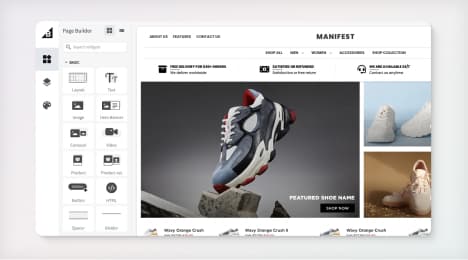
Watch Our Product Tour
See how BigCommerce helps you build and manage your online store with ease.
- Ecommerce Insights

6 Key Steps to Launch Your Online Store
Explore our Launch Foundations series to get your BigCommerce store up and running quickly.
BigCommerce helps growing businesses, enterprise brands, and everything in-between sell more online.
How to build and use a minimum viable product
The initial step of creating a minimum viable product (MVP) is identifying a problem experienced by a consumer group and developing a product that solves it. Once the MVP is created, the learning process begins. Each stage of investigative development should include cause and effect metrics that determine whether the company is pushing the right business model forward.
Validated learning
Once the MVP is established, the startup needs to setup a model for validated learning. This is how it will measure progress: by testing assumptions about the product and market by specifying a goal and applying metrics that represent it, running a test, analyzing the result, improving the product and starting the process again.
While many businesses consider revenue the essential unit of progress, some marketers believe validated learning offers greater insights into the value of company by studying aspects like ROI-per-customer and how consumers respond to a product over time. This strategy validates the potential for long-term growth by better understanding early adopters.
How to start using an MVP
There are several ways a business can introduce a product with the goal of getting useful information as well as revenue.
"Flintstoning" - This is where an entrepreneur sets up an online interface that looks automated, while he or she is manually processing orders behind the scenes. For example, an online retailer may test the market by taking pictures of the product, posting them on a website and manually fulfilling orders as they come in. If the response from customers is favorable, that business owner validated his assumption that there is a market for this service.
Concierge - Using this method, a business owner emulates the steps people would take with the business online, but executes it in-person beforehand. You start by servicing a customer one-on-one for a small fee and updating the product or service based on the customer's preferences. The business adds more one-on-one clients until the model is no longer sustainable. Then, it brings the business online.
Crowdfunding - The advantages of crowdfunding are numerous. It communicates the value to potential customers, it helps the business generate money to launch and creates a group of early adopters. It's a good idea to stay in close contact with this tribe of early adopters, as their advocacy can help your business in many different ways.
Landing page - This is the destination where visitors will arrive after clicking on an advertisement, email offer or other campaign. The goal should be to demonstrate value, validate your pricing, eliminate objections and ask the visitor to take action.
Create an ad campaign - Search-based advertising is an effective way to connect with potential customers because your message reaches them in the moment they need you. Optimize your campaign by testing different messages for effectiveness, and drive inbound traffic to your landing page where you can communicate value.
Measure results in Google Analytics - You can evaluate user interest in your products and explore what messages they respond to by measuring your ad campaign in Google Analytics.
Solicit feedback - Create a customer chat portal or a survey form to gain valuable insight into what customers think of your product and find out what questions they have.
MVP helps startups increase their chances of success by placing a high priority on learning how customers react to the products before and during the creation of the business. By applying these principles to your own vision, you can avoid unnecessary risk and increase your chances of long term success.
BigCommerce helps growing businesses, enterprise brands, and everything in-between sell more online.
Start growing your ecommerce business even faster.
High-volume or established business? Request a demo